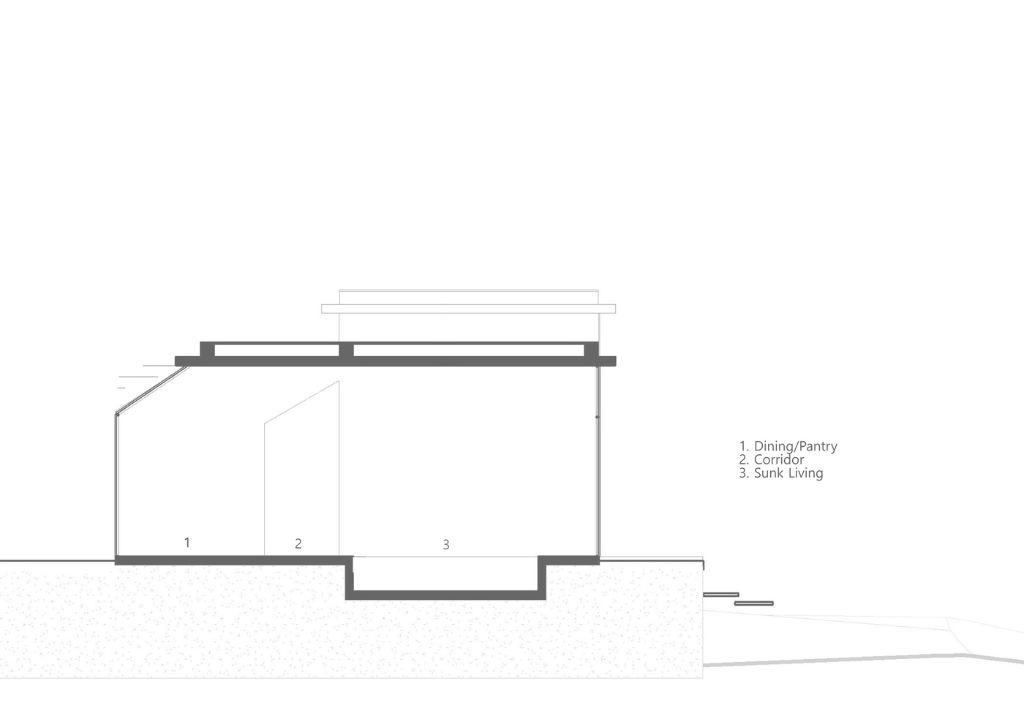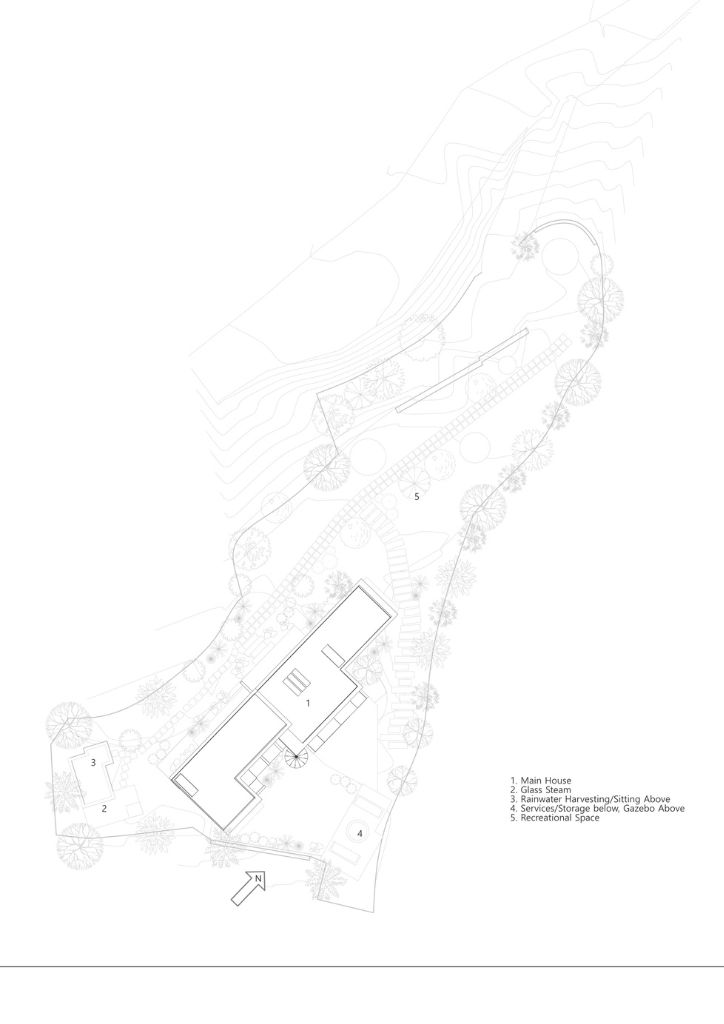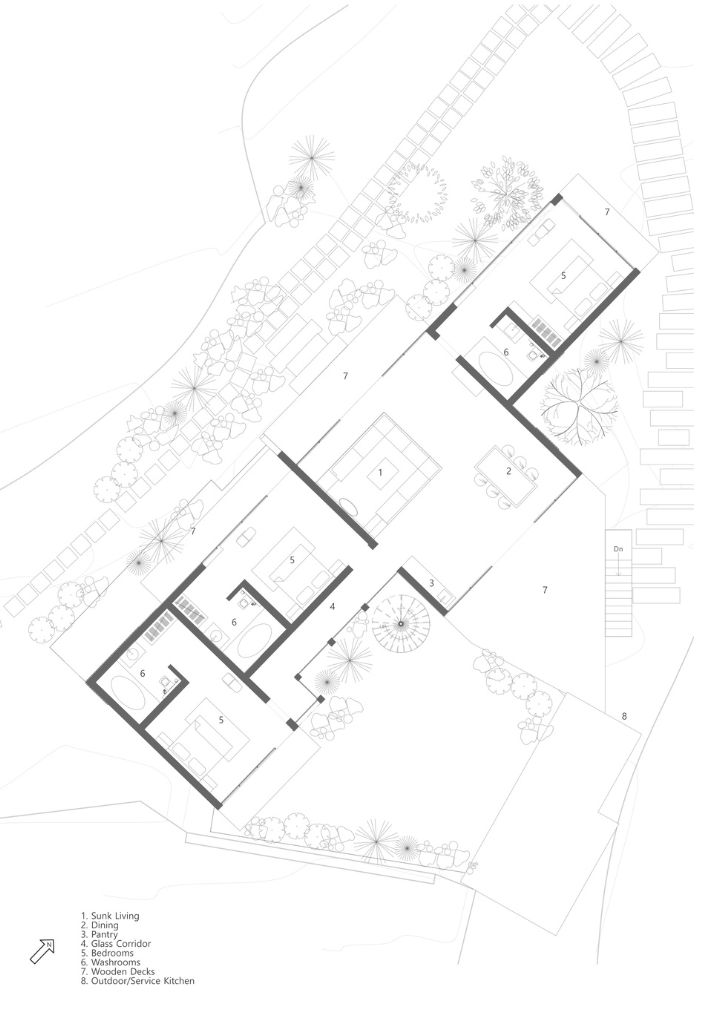
Glasshouse Celeste Provides Residents with Magnificent Himalayan View
Glasshouse Celeste offers a panoramic view of the Himalayan peaks to its occupants. Designed by IDIEQ, the client wanted a simple, comfortable weekend place, far from the chaos of a bustling city. The residence is located atop a hillock with a generous view of the mountains. The objective of the project is to maximize this luxury so residents can enjoy the stunning views while inside the house.

The client believes that the house should be designed to look out, not be looked at. IDIEQ decided to dispense with elaborate traditional Indian interiors and unnecessary mod cons. The client only wanted to capture all the ultimate luxury from a bed in a bedroom with a sweeping view of the mountains. Instead of using contemporary heavy Indian boxes, the bedrooms have floating beds.
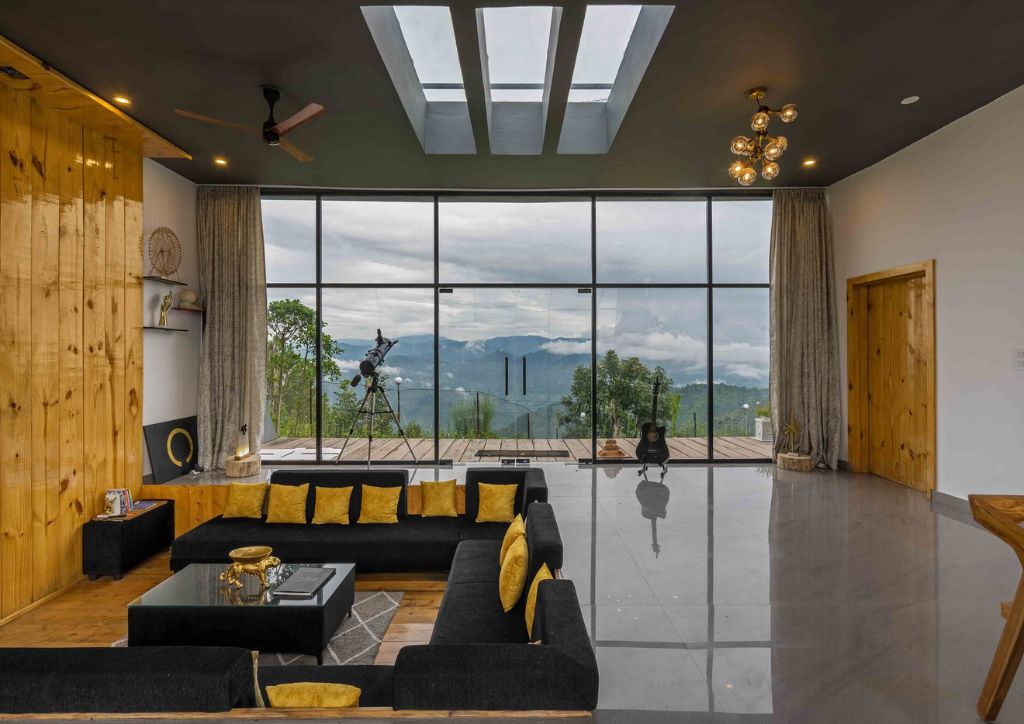
In the living area, the architect deliberately sunk the sitting into the floor to avoid any obstacles as occupants looked through one glass wall across the other. They also positioned the opening through all the spaces to permit a fascinating view.

The exterior facade and a few skylights use glass. This creates a greenhouse effect, which is evident in two bedrooms towards the south as the long connecting corridor was blocking cross ventilation. The architect broke the roof into two parts to mitigate this issue. Providing a higher ceiling towards the south helped the hot air rise up, along with sufficient volume above the middle washroom to keep the water tanks, heat pump, and other equipment.
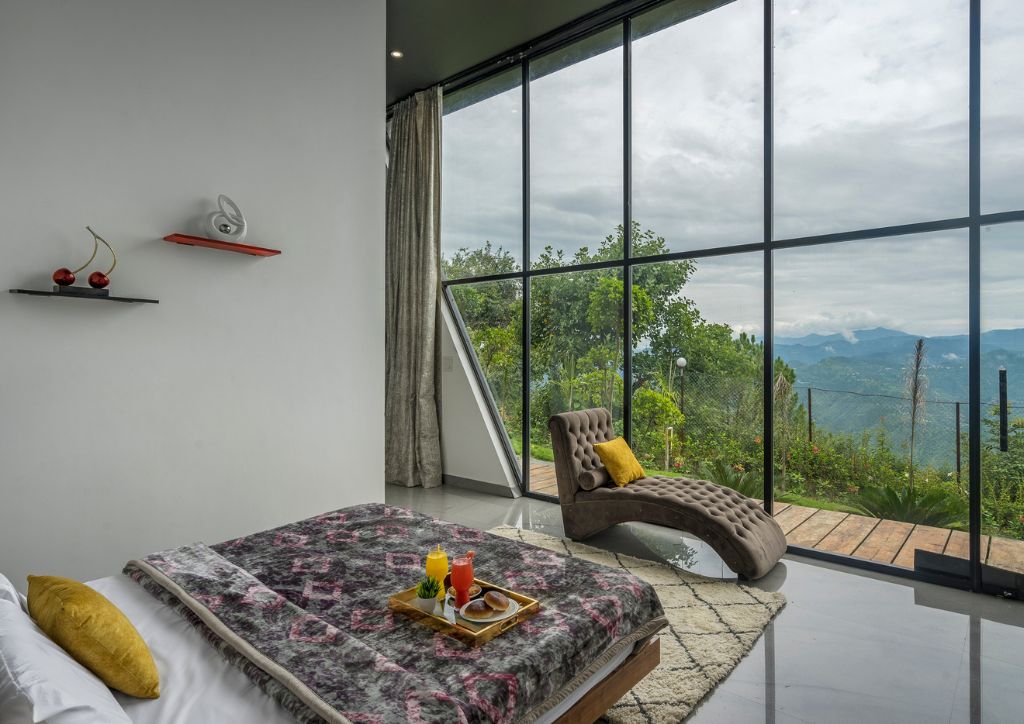
Moreover, the architect shares that the house harvests all its water needs from rainwater stored next to a steam bath in the southern part of the property. The elevated slab on the rainwater harvesting tank is another spot and has been landscaped to enjoy gusting winds from the west.
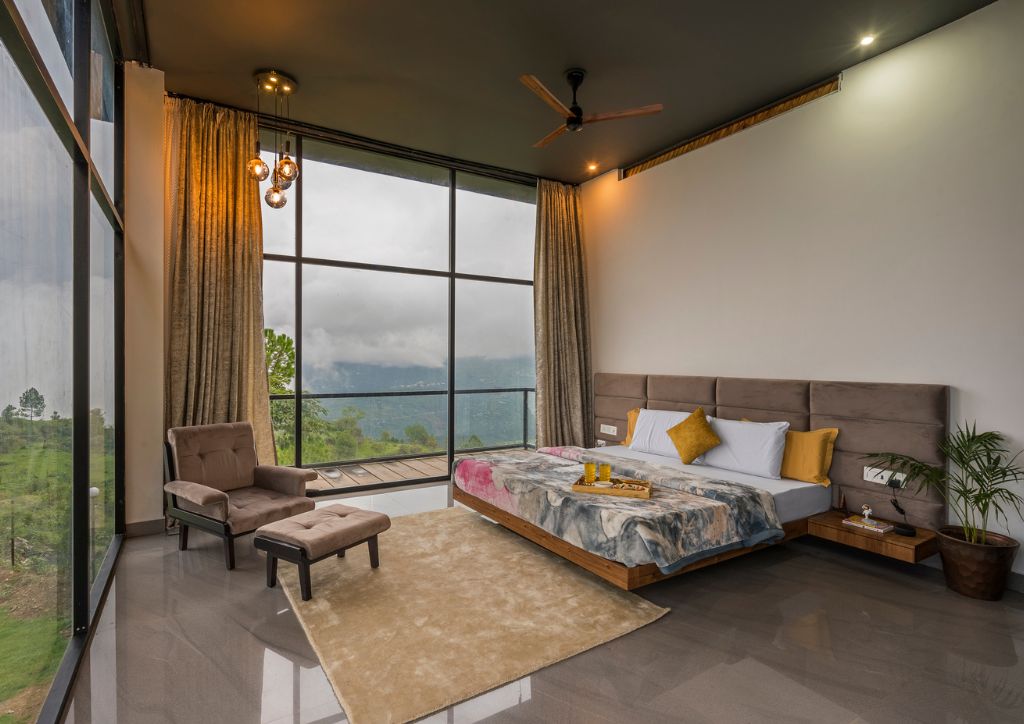
The landscaping is also planned to maximize the panoramic view of the clear and pollution-free sky from every corner of the property. To achieve this, planets were spread across the greenery of the garden and created textures of various planets with natural stone. This detail inspired the name of the project: Celeste. The residence can generate energy from the sun and store it for the night.
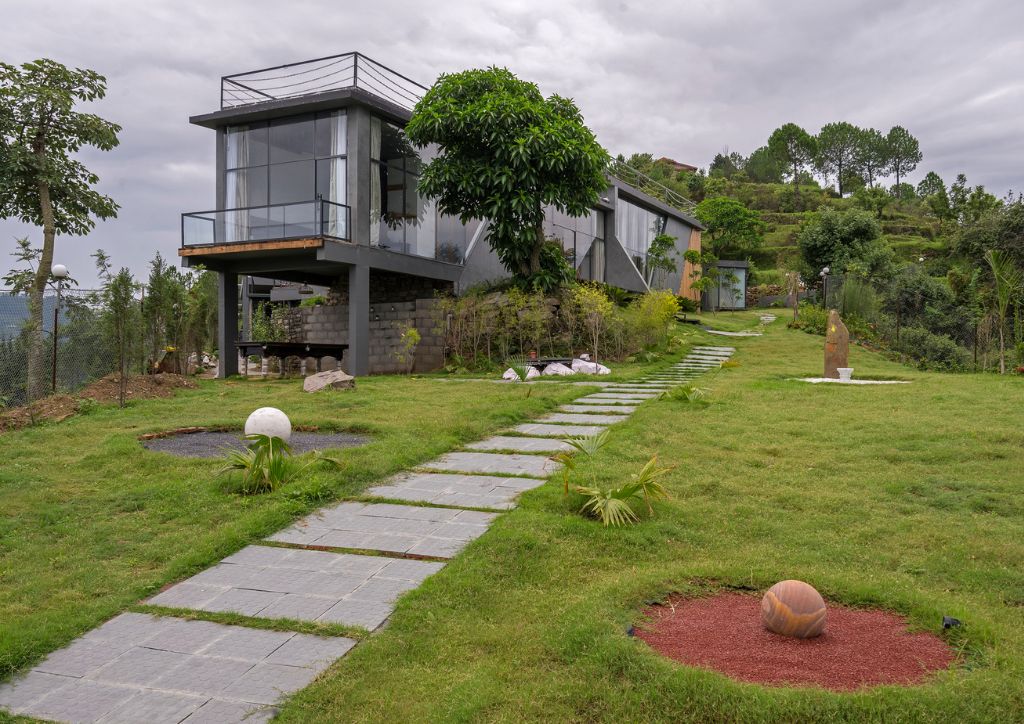
Given the location of the house, carrying the materials to the site became a challenge for the construction. “Driving up from Jim Corbett National Park towards Ranikhet, a tiny spiraling road opens to this meadow-like soft landscape where Himalayan mules were the only help to carry materials to the top,” the architect explains. They decided to keep the house at one level to avoid excessive vertical structural elements.
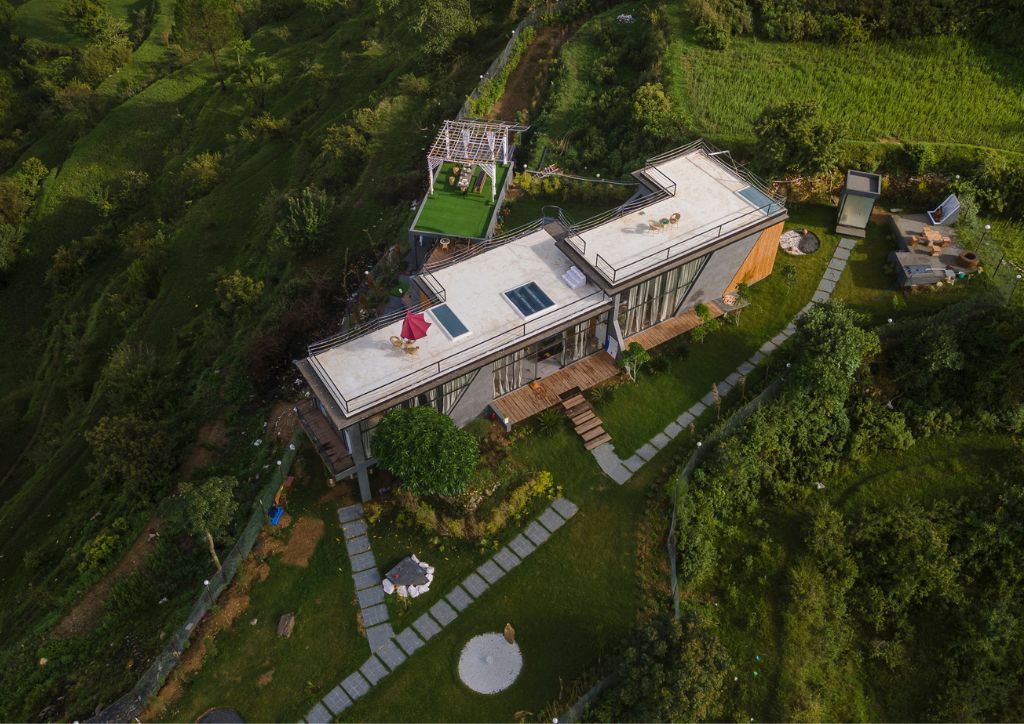
Glasshouse Celeste takes onlookers by surprise. It is a simple block of glass that has been built to look diverse from each angle. “The mix of glass, paint, concrete, and wood on the facade changes as one moves around, because of the ever-transforming perspectives of interiors which go along,” shares the architect.
Lastly, the inverted beams provide an illusion as if a flat minimal block of roof spans over. The corridor also features slanted glass which blocks weather but not the natural surroundings. “The beauty of it all is the thread of simplicity that runs through the whole design. It is the imaginative exploration of simple materials and an excellent location,” the architect adds.
Photos by Tarang Goyal


